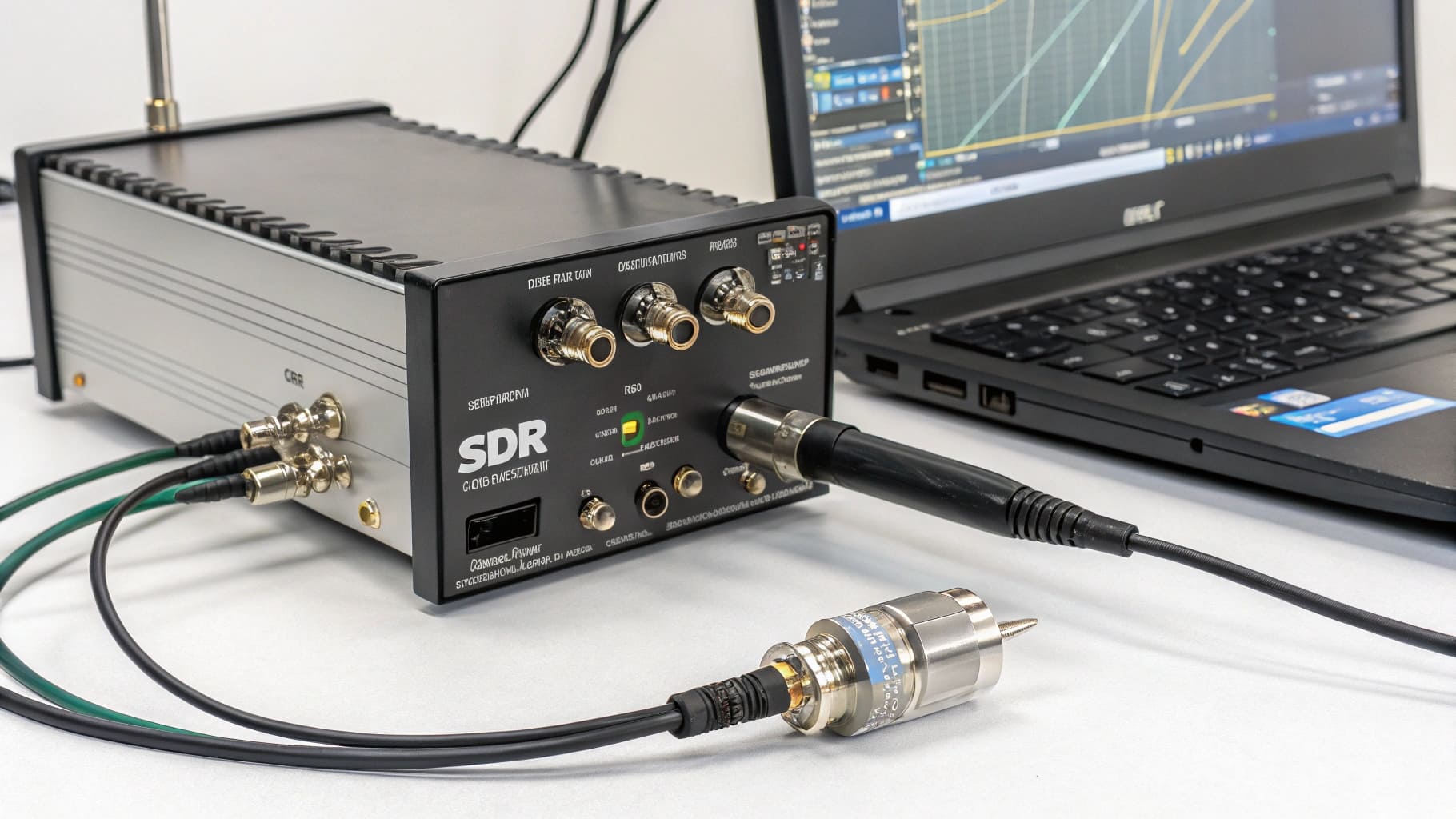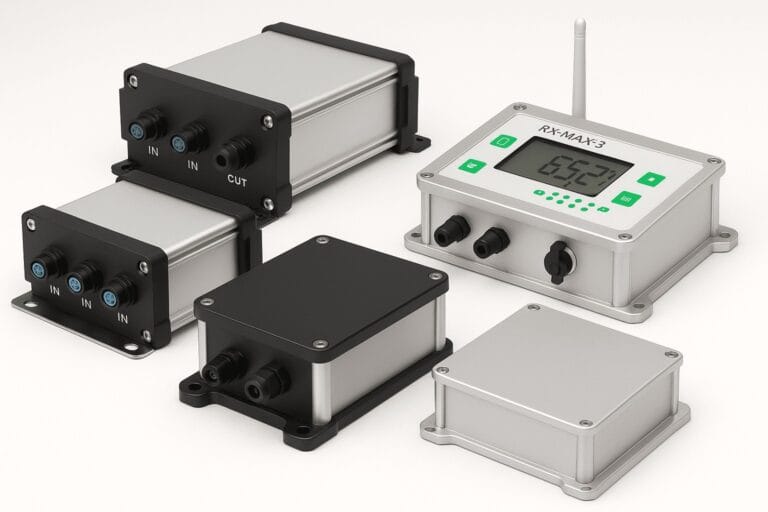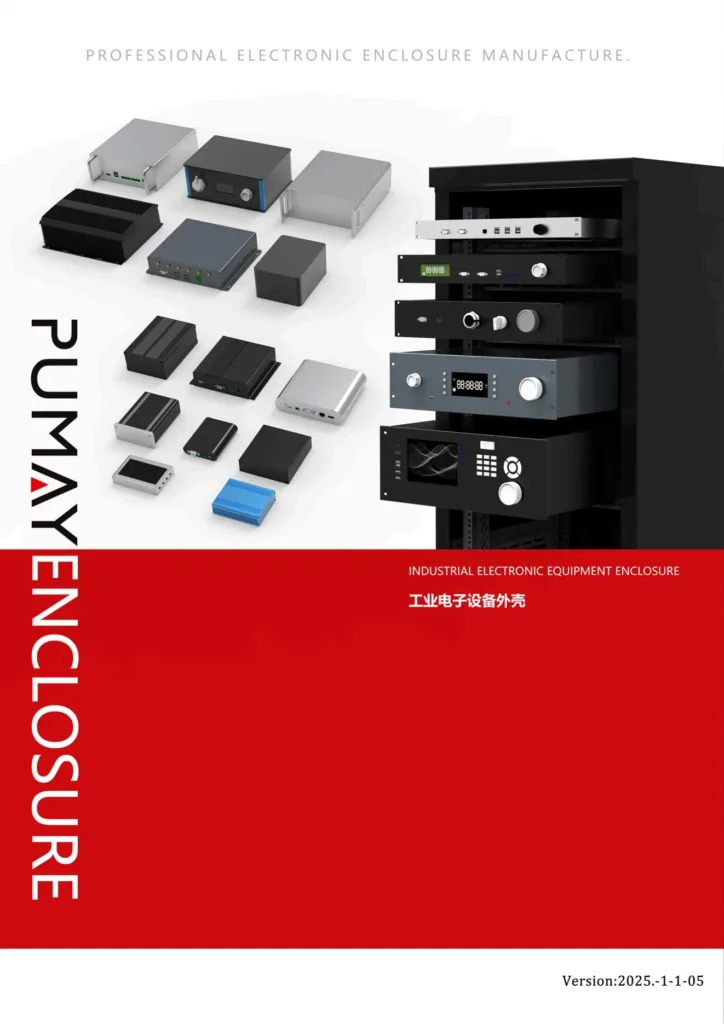Your project just failed its validation tests because the "waterproof" box you specified leaked. Now you face costly redesigns and project delays. Vague marketing terms don't equal real-world protection, but there's a better way to guarantee performance.
A truly waterproof enclosure is certified to an Ingress Protection (IP) rating[^1], like IP67. This isn't a marketing term; it's a standardized test result proving a specific level of defense against water—from powerful jets (IPx6[^2]) to temporary submersion in 1 meter of water (IPx7[^3]).
 "IP67 waterproof enclosure testing"
"IP67 waterproof enclosure testing"
Relying on the IP code is the first step, but understanding how that code translates into design features is what separates a reliable product from a field failure. Let's look at what really matters.
How do you know if a box is truly waterproof?
You see IP65, IP67, and IP68 on datasheets, but the distinction seems academic. Picking the wrong one means you're either overpaying for protection you don't need or, worse, deploying a system that's doomed to fail.
An enclosure's waterproof capability is confirmed by its IP rating's second digit. This number isn't arbitrary; it corresponds to a specific test, such as resisting powerful water jets (IPx6) or surviving 30 minutes of submersion at a 1-meter depth (IPx7). Choose the rating that matches your device's real-world environment.
 "Designing seals for IP-rated enclosures")
"Designing seals for IP-rated enclosures")
The IP Code (IEC 60529)[^4] is your best tool for defining environmental protection[^5]. The first digit relates to solids (dust), and the second relates to liquids (water). For industrial electronics, you’re almost always starting with an IP6X rating, meaning the enclosure is fully dust-tight. The second number is where the critical decisions are made.
A Common—and Costly—Mistake
I once had a client developing a controller for a factory floor. They insisted on an IP68 rating. During our design consultation, I asked them about the operating environment. The enclosure would be mounted to a machine and would be subjected to daily high-pressure washdowns, but it would never be submerged.
The IP68 rating, which certifies protection against continuous submersion, required a more complex sealing system and more rigorous (and expensive) individual testing on each unit. An IP66 rating, which certifies protection against powerful water jets, was perfectly sufficient and more cost-effective. By right-sizing the specification, we saved them nearly 15% on the enclosure cost while delivering the exact protection they needed. Don't default to the highest number; specify for the actual application.
Quick Guide to Waterproof IP Ratings
| IP Rating | Protection Against | Typical Application Scenario |
|---|---|---|
| IP65 | Water jets from any direction | Indoor equipment that needs protection from spills or cleaning. |
| IP66 | Powerful water jets | Factory equipment subject to high-pressure washdowns. |
| IP67 | Temporary immersion (1 meter, 30 minutes) | Outdoor electronic devices (e.g., IoT sensors, pole-mounted amps). |
| IP68 | Continuous immersion (depth specified by user) | Submersible pumps, marine sensors, underwater equipment. |
Always start your design process by defining the environment. This single step will guide your entire enclosure strategy and prevent costly over-or under-engineering.
What are the primary applications for a waterproof box?
Your electronics are for a controlled indoor setting, so why bother with a waterproof box? Because "controlled" environments still contend with humidity, condensation, fluid drips, and cleaning protocols that are just as damaging as rain.
Waterproof boxes ensure operational uptime by protecting sensitive electronics from environmental hazards. They are critical for outdoor telecom gear, marine systems, industrial sensors in washdown areas, and medical devices[^6] that must withstand chemical sterilization.
 "Waterproof rackmount chassis for industrial use"
"Waterproof rackmount chassis for industrial use"
An IP-rated enclosure is a core component of reliability engineering. It isolates your sensitive PCB from the operational environment, whether that's a factory, a vehicle, or a remote cell tower.
Real-World Scenarios
✅ Industrial Automation: A client uses our IP66 die-cast aluminum boxes for PLC controllers in a food processing plant. Every day, the equipment is blasted with high-pressure, high-temperature water for sanitation. A lower-rated plastic box would fail within weeks from water ingress or warping due to thermal cycling. The aluminum enclosure provides a robust, stable seal shift after shift.
✅ Smart Grid Systems: We build IP67 enclosures for power grid monitoring equipment installed on utility poles. These units have to survive everything from wind-driven rain to ice storms for a decade or more. The enclosure not only keeps water out but the aluminum body acts as a passive heatsink, managing thermals without a failure-prone fan.
✅ Medical Devices: For a company building a surgical fluid management system, the enclosure had to be sealed to an IP67 level. This wasn't just to protect the electronics; it was to allow the exterior to be wiped down with aggressive sterilizing chemicals without any fluid seeping inside, preventing bio-contamination.
The "use case" isn't just a location; it's a set of environmental challenges[^7] that the enclosure is built to solve.
How do you design an enclosure to be reliably waterproof?
You specified an IP67-rated enclosure and used waterproof connectors, yet your assembled product failed in testing. What happened? The box itself is only one part of creating a truly sealed system.
Reliable waterproofing depends on a system of three elements: a continuous gasket with controlled compression, a fastener pattern[^8] that provides even pressure, and properly torqued, IP-rated cable glands[^9] for all I/O points. The design of the gasket groove[^10] is the most important factor.
 "Designing a waterproof enclosure seal"
"Designing a waterproof enclosure seal"
Achieving a high IP rating is a game of details. Here’s what we focus on when designing for clients.
1. The Gasket-and-Groove System
This is the heart of the seal. A cheap, flat, stick-on gasket is a common failure point. When you tighten the lid, it's easy to over-compress the gasket, squeezing it out of place or permanently deforming it so it won't seal again after being opened.
The professional solution is an O-ring (or a custom-profile gasket) that sits in a CNC-machined groove.
- The Groove Controls Compression: The depth of the groove dictates exactly how much the gasket is squeezed (typically 20-30% compression). It's impossible to over-tighten it.
- It Ensures Continuous Contact: The groove prevents the gasket from moving, ensuring you have a perfect 360-degree seal with no weak spots.
2. Fastener Placement
If fasteners are too far apart, the enclosure lid can bow slightly between screws, creating a tiny gap in the seal. For high-performance IP67/IP68 ratings, we follow a general rule of thumb: place fasteners no more than 100mm to 150mm apart to maintain even pressure along the entire gasket.
3. Cable Glands: The Most Common Failure Point
Your enclosure can be a perfectly sealed submarine, but it's useless if there's a huge hole where your cable enters. Every single penetration must be sealed.
- Use IP-Rated Glands: Ensure your cable gland has an IP rating equal to or greater than your enclosure.
- Match the Diameter: Use a gland designed for your specific cable diameter. A gland designed for a 10mm cable will not seal a 6mm cable properly.
- Torque Matters: A client's IP67 product was failing in the field. We discovered their assembly line wasn't tightening the cable gland nuts to the manufacturer's specified torque. This left a microscopic channel for water to wick its way in over time.
A waterproof box is a system. Get these three elements right, and your design will be robust.
Do waterproof boxes need to float?
It’s a common image from advertisements: a rugged case bobbing in the water. But for the industrial equipment you’re designing—which is likely bolted to a wall or a vehicle—does buoyancy[^11] actually matter?
No, the vast majority of industrial waterproof enclosures are not designed or required to float. Their goal is ingress protection while fixed in place. Buoyancy is a specialized feature for portable consumer cases or marine survival equipment, not a standard for industrial-grade enclosures.
 "IP67 case design"
"IP67 case design"
Let's apply some basic physics. An object floats if its total density (mass divided by volume) is less than the density of the water it displaces.
An empty, sealed aluminum box might be buoyant. However, as an engineer, you're not shipping empty boxes. You are putting components inside:
- A dense PCB with transformers and inductors
- A steel mounting plate
- A heavy power supply
- Copper wiring
Once you add the mass of your actual electronics, the total density of the assembled unit almost always becomes greater than that of water. It will sink.
The Real Engineering Goal: Survivability, Not Buoyancy
For my clients in industrial automation, smart grid, or telecom, the conversation is never about floating. The conversation is about survivability. The real questions are:
- Will the seal withstand the dynamic pressure of a wave crashing against it on a ship?
- Will the enclosure protect the electronics during a flash flood that submerges a ground-level utility cabinet for several hours?
- Will the anodized aluminum finish resist corrosion from years of salt spray?
Floating is a feature for a completely different market, such as a Pelican case used to transport cameras or a flare kit on a boat. The enclosures are made from lightweight injection-molded plastic and are intentionally designed with a high internal volume-to-weight ratio to achieve positive buoyancy. For fixed industrial electronics, buoyancy is a distraction from the real goal: absolute, verifiable ingress protection.
Conclusion
Stop looking for a generic "waterproof box" and start designing a waterproof system. Define the real IP rating your environment demands and engineer the solution by focusing on the gasket, fasteners, and cable entries. That is the path to true product reliability.
---
[^1]: Understanding IP ratings is crucial for ensuring your enclosure meets the necessary waterproof standards.
[^2]: Discover the level of protection IPx6 offers against water jets for your applications.
[^3]: Understanding IPx7 can help you choose the right enclosure for temporary immersion scenarios.
[^4]: Gain a comprehensive understanding of the IP Code to better navigate enclosure specifications.
[^5]: Gain insights into how to protect your electronics from environmental hazards effectively.
[^6]: Explore the importance of waterproofing in medical devices to prevent contamination.
[^7]: Identify the challenges your enclosures may face to better prepare your designs.
[^8]: Discover how fastener placement affects the integrity of your enclosure's seal.
[^9]: Learn about the role of cable glands in maintaining the waterproof integrity of enclosures.
[^10]: Understanding gasket grooves can help you design better seals for your enclosures.
[^11]: Understand the role of buoyancy in waterproof design and its relevance to industrial applications.




